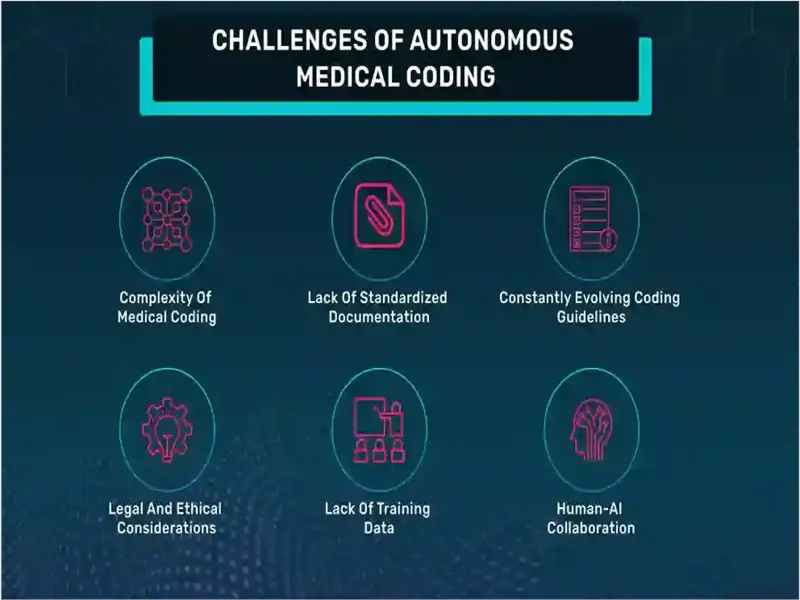The complexity of medical coding:
Medical coding is an intricate and specialized undertaking that demands a profound comprehension of medical language, anatomy, and procedures. The International Classification of Diseases, 10th Revision (ICD-10), encompasses approximately 68,000 diagnosis codes, while its successor, ICD-11, the revised version, comprises roughly 17,000 distinct codes for injuries, diseases, and causes of death. Furthermore, ICD-11 incorporates over 120,000 codable terms, providing a comprehensive foundation for accurate medical coding.Constantly evolving coding guidelines:
Another challenge is these codes, and medical coding guidelines and practices are subject to frequent updates and revisions. New codes are introduced, existing codes are modified, and coding rules change over time. Autonomous coding systems must stay updated with the latest coding guidelines to ensure accurate code assignment, requiring regular maintenance and retraining of the AI models.
Lack of standardized documentation:
Medical coding relies heavily on standardized documentation, such as the International Classification of Diseases (ICD) and Current Procedural Terminology (CPT) codes. However, medical documentation can vary in format, language, and level of detail, making it difficult for AI models to extract relevant information and assign appropriate codes consistently. Clinical data is unstructured, uses symbols (e.g., “a [xx] y/o M w/ Hep C, HTN, CKD, a/w HTN emergency"), at times incomplete, and lengthy (an average of 1500 words) AI systems need to accurately interpret medical documentation, such as clinical notes and reports, to assign appropriate codes.
Lack of training data:
Developing accurate and robust autonomous coding systems requires large amounts of high-quality training data. However, labeled medical coding datasets can be limited and expensive to obtain. Additionally, the annotation process for medical coding data is time-consuming and often requires expert coders. Insufficient or biased training data can lead to inaccurate coding results and decrease the reliability of the AI system. The research has been based primarily on retrospective data ( historical data to train and test algorithms) rather than prospective or real-time data.
Legal and ethical considerations:
Medical coding involves sensitive patient data, and ensuring patient privacy and data security is paramount. AI systems used for autonomous coding must adhere to strict data protection regulations, such as the Health Insurance Portability and Accountability Act (HIPAA) in the United States. Compliance with legal and ethical guidelines while leveraging AI technology can pose additional challenges.
Human-AI collaboration:
Autonomous coding systems are most effective with human coders. Collaborative workflows combining AI models' strengths and human expertise can improve accuracy and efficiency. However, integrating AI into existing coding workflows and ensuring effective collaboration between AI and human coders can present implementation challenges.






